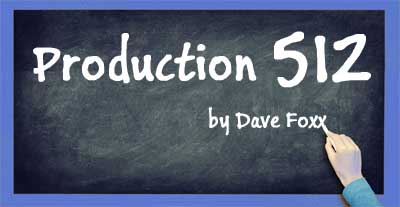 I had a photography instructor in college who laughed at people who went out and spent a bucket of money for a “name” camera like Nikon or Hassleblad, but couldn’t take a decent picture. Again and again he’d tell us, “The camera is just a tool. It doesn’t take the pictures. You mind is what takes the pictures. The camera only records what your eye sees.” One of the greatest photographers of all time, Ansel Adams, very often used a Kodak “Box” camera, one of the least expensive cameras in the world. Most of the iconic photos you’ve seen from the last century and well into this one were shot on Speed Graflex 4X5 cameras, a not terribly expensive camera that was standard in nearly every newsroom in the world. Today, most of you are already carrying one of the most technically advanced cameras ever devised in your pocket: the digital camera in your phone! And still, most photos you see are, artistically speaking, crap.
I had a photography instructor in college who laughed at people who went out and spent a bucket of money for a “name” camera like Nikon or Hassleblad, but couldn’t take a decent picture. Again and again he’d tell us, “The camera is just a tool. It doesn’t take the pictures. You mind is what takes the pictures. The camera only records what your eye sees.” One of the greatest photographers of all time, Ansel Adams, very often used a Kodak “Box” camera, one of the least expensive cameras in the world. Most of the iconic photos you’ve seen from the last century and well into this one were shot on Speed Graflex 4X5 cameras, a not terribly expensive camera that was standard in nearly every newsroom in the world. Today, most of you are already carrying one of the most technically advanced cameras ever devised in your pocket: the digital camera in your phone! And still, most photos you see are, artistically speaking, crap.
Today, like photographers, audio producers have some of the best gear ever made. It’s certainly the easiest gear to work with when compared to what the recording giants of the last century used. Imagine having to “punch in” at precisely the right moment on your multitrack tape recorder because you couldn’t just drag it onto the tape in just the right place. The tape had to be moving at 15 or 30 inches per second with plenty of pre-roll because the 2-inch wide tape reels weighed a ton and took a few seconds to get to speed. You had to time the precise moment to hit “record” so that the sound you’re adding matches up with what’s already on the tape…and you had to do it all by ear. There was NO visual editing prior to the middle 80s.
And yet, many or today’s producers make sound that is flat (not in a good way either) that is often hard to listen to for more than a few seconds. Every nuance of production is right at your fingertips; gain, EQ, reverb, compression, and yet, too often the finished product is humdrum, out of sync, unintelligible or just confusing. Producers get wrapped up in all the technical stuff their workstation can do which in itself is not a bad thing, but they are lacking the most important ingredient to the mix. Too often, producers believe that because they have the latest version of Adobe or Avid gear and software, the quality of the work will always be stellar. Clearly, they never took Photography 181 where I went to school.
Cameras do NOT take the picture, JUST like your workstation does NOT produce the spot. Cameras are tools. Workstations are tools. Understanding all the widgets and gizmos on either helps without a doubt, but it’s the HUMAN element that takes the picture or makes the sound.
The hardest part of what we do has next to nothing to do with the gear or software. The hardest part of our gig is CREATIVITY.
Over the years, I’ve lectured about creativity all over the world, from Los Angeles to South Africa and from Amsterdam to Sydney. London, Copenhagen, Dublin, Barcelona, and West “by-god” Virginia have all heard from me about creativity, what it is (what it REALLY is), how to learn it, feed and grow it and even how to use it. I’ve written about it on these very pages several times. Today, I’m going to explain it on video.
The gear, the skills and techniques to USE the gear are important, but without creativity, none of that matters. Once you add creativity to your mix in the words, music and effects, everything will sound magical. You will be in demand because you have that “something” that makes your sound supreme.
Acquiring the creativity “skill” will spill over into your life. You’ll become better at just about everything. Pay attention. This video could change your life. Or not.

